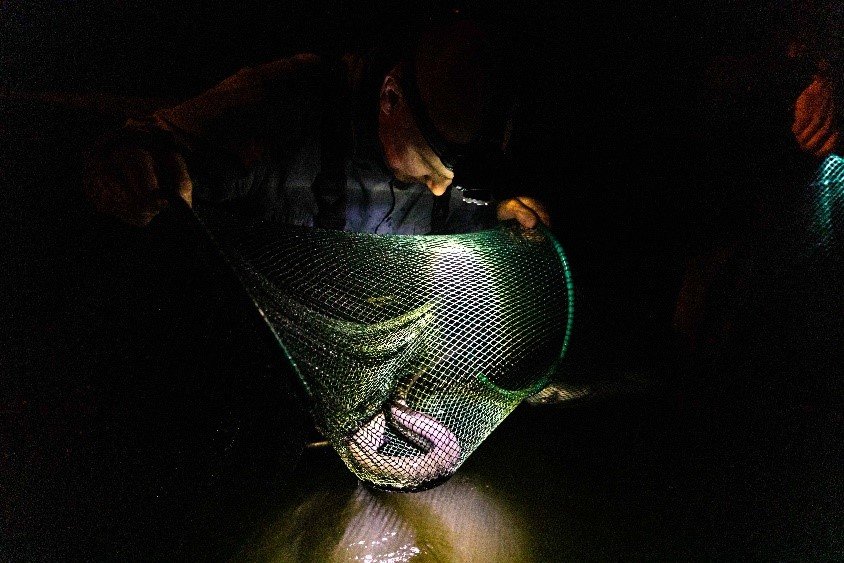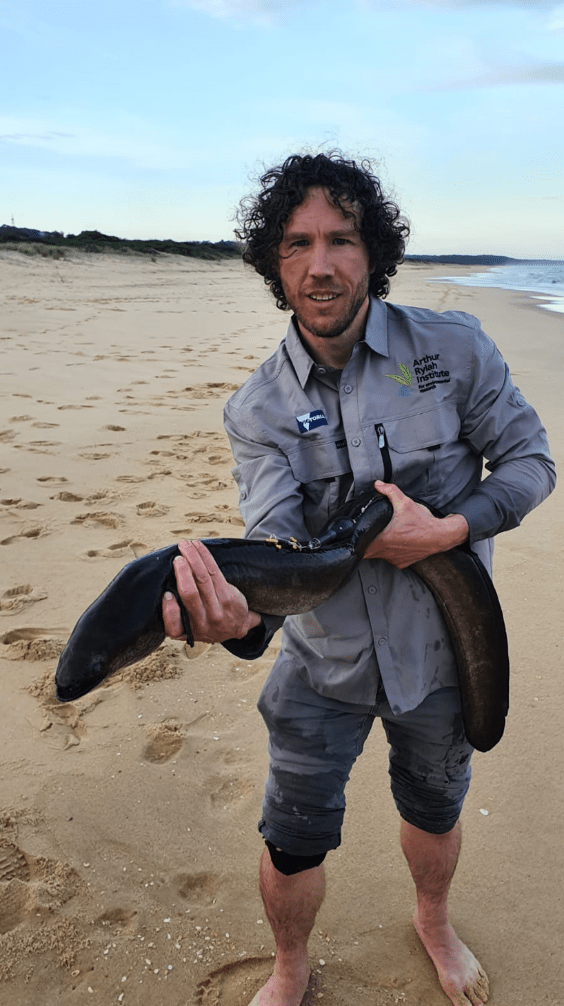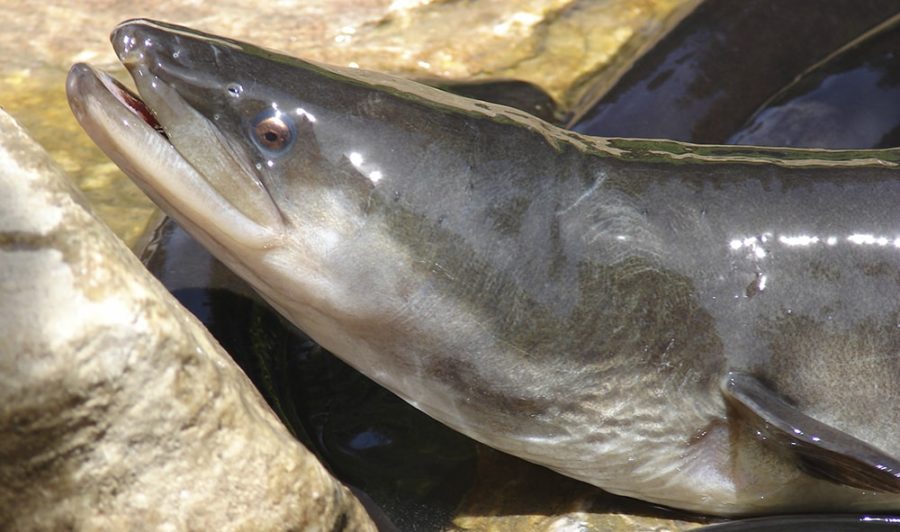In world first, scientists track eels’ mysterious route

For the first time ever, scientists have been able to record information about the migration of Australia’s short-finned eels.
Each year, adult eels travel 2000km from their freshwater homes into the deep ocean to mate and die. This isn’t the first time they embark on an epic journey. As larvae, they travel in reverse: from the deep ocean to freshwater, where they live out most of their adult life.
Their return journey to deep water completes their life cycle, but until now scientists have had a limited understanding of what route they take and the challenges they face along the way.
Small, compact trackers, which record light, temperature and depth, were attached to the eels’ skin. “Using that information, we’re able to reconstruct the migration route of the eels and also determine what’s happened to them along the way,” says Arthur Rylah Institute for Environmental Research fish ecologist Wayne Koster, who led the paper published recently in Scientific Reports.
Sixteen eels from the Hopkins and Fitzroy rivers of western Victoria have been fitted with trackers since 2019. To the surprise of researchers, despite being from the same area, each eel followed its own pathway.
“Some eels headed directly east across Bass Strait and then up north,” Wayne says. “Others went south and went around Tasmania and then north. So there’s quite a lot of variation in the way they get to their destination. The eels that migrate south and around Tasmania are taking a longer pathway, but it gets them into deeper water quicker. That might have some benefits in terms of reducing predation.”

According to Wayne, one of the other major insights from the study is just how many challenges the eels face trying to get to their destination. “When the temperature spikes that tells us that the eels, along with their tracker, have been ingested by a shark or a whale, so they’re potentially a valuable food source for some of the marine predators out there.”
The short-finned eel is culturally significant to the Gunditjmara Traditional Owners whose ancient eel trap sites were recently added to the UNESCO World Heritage list and marks the first time a site has been protected solely for its Aboriginal cultural importance.
The Gunditjmara Traditional Owners have been working with the Victorian Department of Environment, Land, Water and Planning on the satellite-tracking program.
That eel populations have declined dramatically over the last 50 years across the world is of great concern to scientists and traditional owners alike. It’s hoped this new research can be used to better understand potential threats to the short-finned eels.
“Human development of the marine environment is increasing. Activities like seismic testing and deep-sea drilling for instance. Understanding where eels migrate can help inform whether they might be interacting with those sorts of activities in the marine environment,” says Wayne, adding that the data could also be used to improve management of fisheries.
“They’re harvested in commercial fisheries. And a key management mechanism is based around the numbers of adults that leave fresh water, but it doesn’t take into account the possibility that many adults might not reach their breeding grounds because they’ve been eaten along the way. That’s something we need to better consider in terms of how we think about managing eels. They might make it out of fresh water, but they’re not necessarily contributing to the reproductive stock of the population.”
Although the trackers have shed important light on the migration route of the eels, little is understood about the eels exact final destination partly because the trackers are programmed to detach from the eels at an allocated time. Some speculate the spawning grounds for short-finned eels are near New Caledonia. “Nobody yet has been able to say for certain exactly where they are spawning,” Wayne says.


